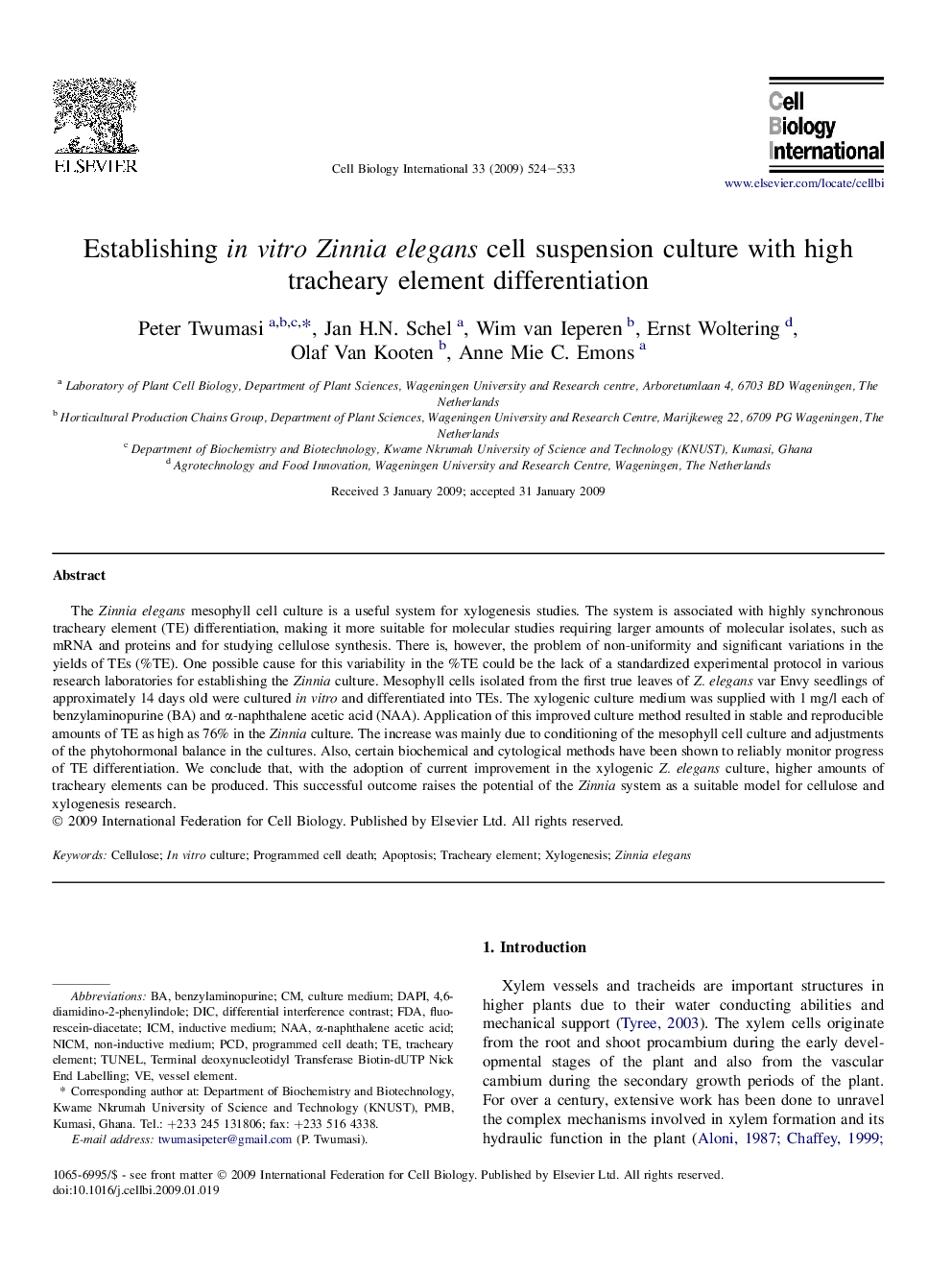| Article ID | Journal | Published Year | Pages | File Type |
|---|---|---|---|---|
| 2067227 | Cell Biology International | 2009 | 10 Pages |
Abstract
The Zinnia elegans mesophyll cell culture is a useful system for xylogenesis studies. The system is associated with highly synchronous tracheary element (TE) differentiation, making it more suitable for molecular studies requiring larger amounts of molecular isolates, such as mRNA and proteins and for studying cellulose synthesis. There is, however, the problem of non-uniformity and significant variations in the yields of TEs (%TE). One possible cause for this variability in the %TE could be the lack of a standardized experimental protocol in various research laboratories for establishing the Zinnia culture. Mesophyll cells isolated from the first true leaves of Z. elegans var Envy seedlings of approximately 14 days old were cultured in vitro and differentiated into TEs. The xylogenic culture medium was supplied with 1 mg/l each of benzylaminopurine (BA) and α-naphthalene acetic acid (NAA). Application of this improved culture method resulted in stable and reproducible amounts of TE as high as 76% in the Zinnia culture. The increase was mainly due to conditioning of the mesophyll cell culture and adjustments of the phytohormonal balance in the cultures. Also, certain biochemical and cytological methods have been shown to reliably monitor progress of TE differentiation. We conclude that, with the adoption of current improvement in the xylogenic Z. elegans culture, higher amounts of tracheary elements can be produced. This successful outcome raises the potential of the Zinnia system as a suitable model for cellulose and xylogenesis research.
Keywords
Related Topics
Life Sciences
Biochemistry, Genetics and Molecular Biology
Biophysics
Authors
Peter Twumasi, Jan H.N. Schel, Wim van Ieperen, Ernst Woltering, Olaf Van Kooten, Anne Mie C. Emons,
